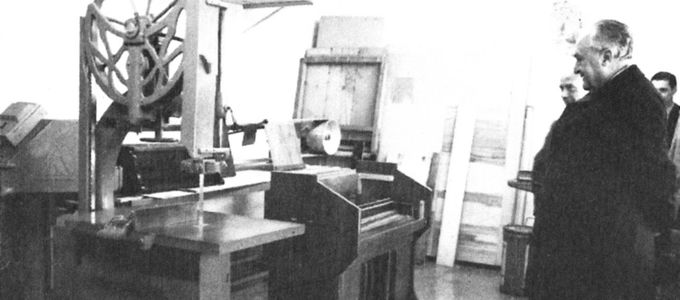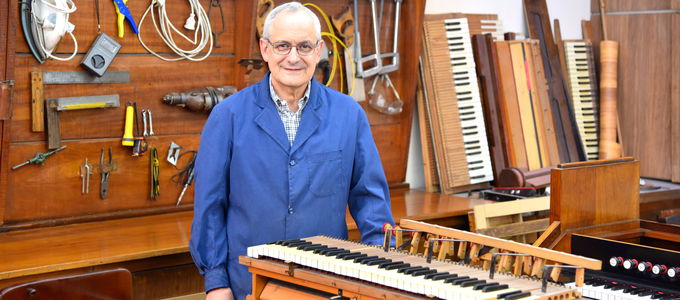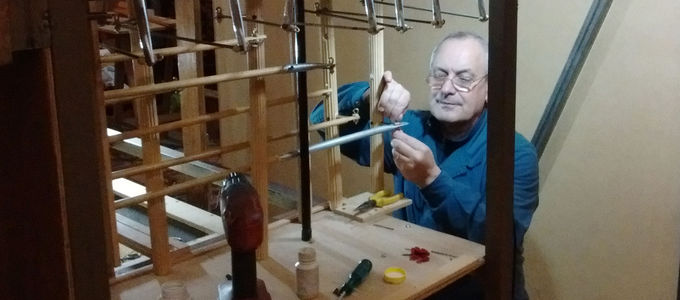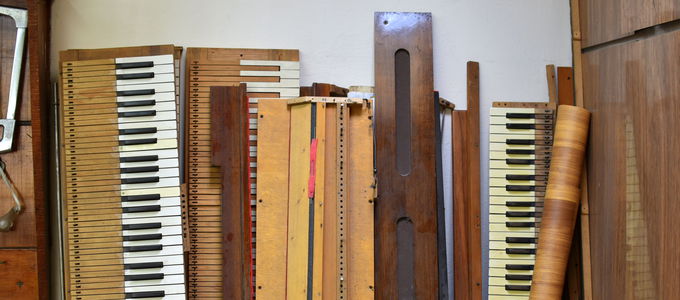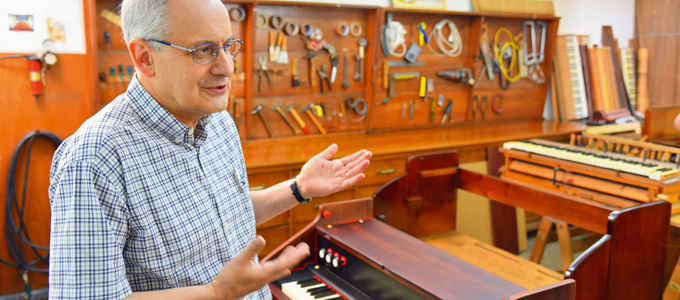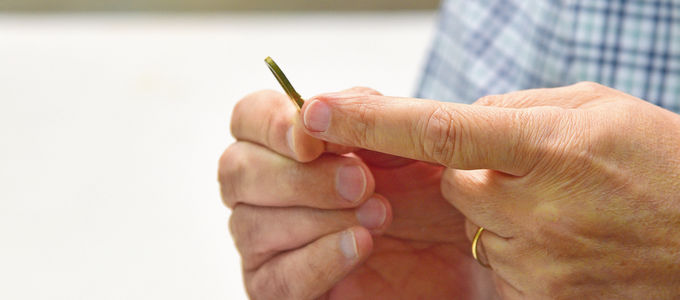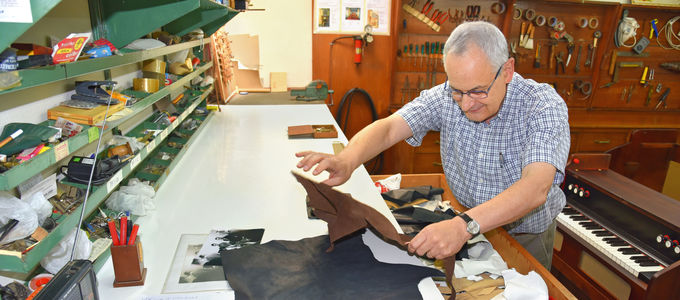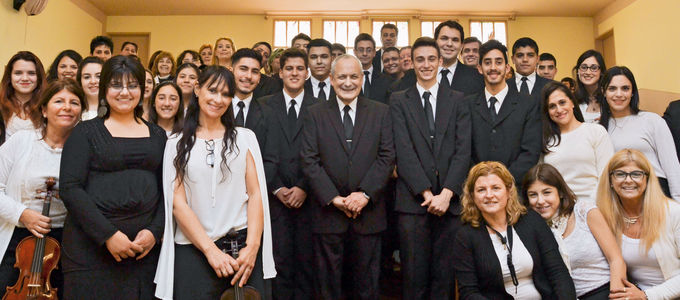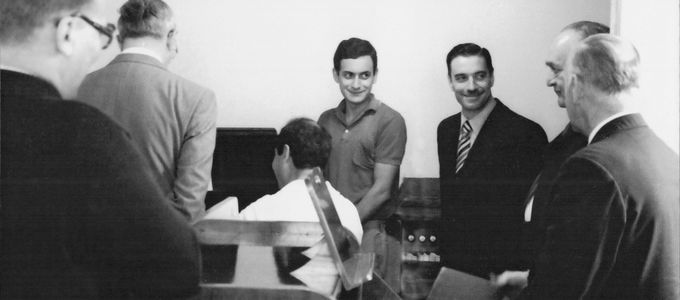
Apostle Jorge Luis Franco from Argentina is an organ and harmonium builder. Viviana Aloy, our nac.today correspondent in Argentina, met up with him in the Church’s own workshop.
Harmonium builder, is that a common trade in Argentina?
No, not at all. Throughout Argentina there are very few if any craftsmen who repair and restore harmoniums.
Why did you choose this occupation?
My father was a harmonium builder. I started to help him with repairs and maintenance of harmoniums in the Church’s own workshop when I was 15. I also acquired skills in the repair of pianos and later worked as a tuner and restorer. And then I had the opportunity to work for a very experienced Argentinian organ builder and organist and was able to add to my knowledge and apply it in working with another magnificent instrument: the pipe organ. Today I have special skills and experience in the building of small pipe organs as well as in the restoration and tuning of harmoniums and pianos.
Did your interest in harmoniums and organs have anything to do with the Church?
Yes, of course. Because I was involved with the maintenance of our harmoniums—which we use in our divine services—I developed an interest in another specialised field: the building of small pipe organs. Since the Argentine market is small, we make them to order. These organs are used mainly in Catholic and Protestant churches, and I execute the orders in my own workshop. That means, all instruments that are not intended for use in our own Church, I repair in my private workshop at home.
Are harmoniums still used today?
The harmonium was invented to be used instead of the pipe organ, with similar timbres and registers, but with the possibility of playing it in smaller rooms. Even today it is an important instrument in our Church, and leads congregational singing in our congregations. It is fundamental for choral singing and learning new songs, as well as accompanying the songs. It is gratifying to see that people in our region are beginning to place more value on music and that it has become more diversified.
Even among the young members?
Yes, contrary to what one might think, young people are attracted to music that is different from the modern music of today. When young members sing the hymns in our Church—even the old songs from way back when—they find it very satisfying. During the Chief Apostle’s latest visit to Buenos Aires, the choir was comprised of 650 young members. Time and again we observe that music is very powerful. Music is a gift of God. For us, music it is an added means to transport the message of the gospel into people’s heart.
Are all the harmoniums in the congregations in Argentina the same?
Most harmoniums we use were built in Germany, some were built here, and a few come from France or the USA. They differ from each other in the way the sound is produced. In the German and North American system, air sucked in through the bellows causes metal reeds to vibrate. The French system works the other way around. By pressure that is built up inside the instrument, the air is expelled causing the reeds to vibrate and producing sound.
What is the most frequent kind of work you do on the harmoniums in our churches?
In the past, harmoniums were tuned a little lower than the most common tuning standard used today, namely a′ = 440 Hertz. Since the harmonium often accompanies our instrumental ensembles and therefore other instruments such as violins, trumpets, and flutes, I have been adapting the pitch of the harmoniums. I am doing it gradually, congregation by congregation.
How long does it take you?
It takes three to four hours to tune one. A harmonium should be tuned every two to three years. Of course that also depends on how well it was taken care of.
Does a harmonium ever need a general overhaul?
Yes, a complete overhaul should be done every twenty or thirty years. For a well-kept instrument this takes about 15 to 20 days.
What do you think when you are working on an instrument?
I always think about the sisters and brothers and wonder if they are going to like how it has turned out. I always imagine them playing hymns in divine service. If a harmonium is completely broken and no longer produces any sound, I think about how nice it will sound once it has been repaired. I take it apart piece by piece and then reassemble it step by step. And once it has been reassembled it is ready to be played again. I love that feeling. It is not something you get used to. In fact, you can hardly wait for the moment when you can say, “It was mute and now it is alive again and sounds wonderful.”
Which interesting situations have you experienced in your work?
There have been many interesting situations, especially in the last few years. We have restored or built a number of organs for various denominations. For example, in 2016 we installed the first pipe organ made entirely in Argentina in the cathedral of Buenos Aires on the occasion of the bicentenary of the country’s independence. All the major newspapers in the country reported about the event. This pipe organ is used every day to accompany the liturgy. Last year we restored the pipe organ in the central synagogue of the city of Buenos Aires. This was followed by an important ceremony, which was incidentally also attended by the Chancellor of Germany, Angela Merkel. We also received a letter of thanks from the German Ambassador in Argentina for our work. I could name many other situations, because the work of bringing new life to mute pipes is highly appreciated, and brings me into contact with people of various religions who love music and musical instruments. On account of my work, I have a good relationship with a number of Catholic priests. We often speak about the reality of Christians in the twenty-first century, about the church as a representative institution, and about today’s challenges to faith. We have a great deal of respect for one another, and even despite some differences, we always find many common points on which we agree.
What is your biggest wish?
My biggest wish is remaining faithful and seeing Jesus Christ face to face. This is what I also wish for my loved ones as well as all my brothers and sisters.






